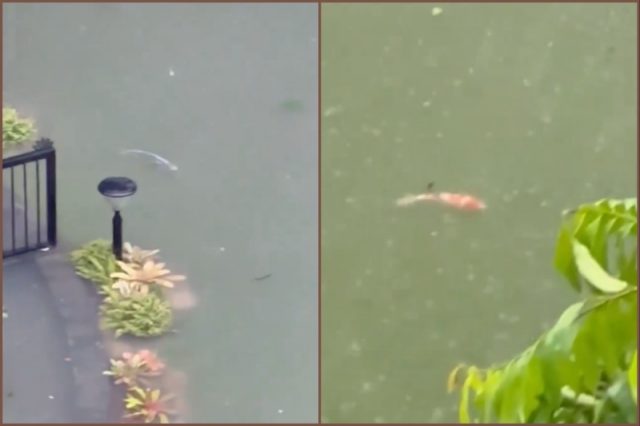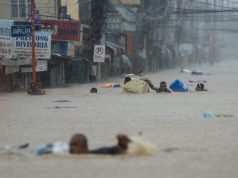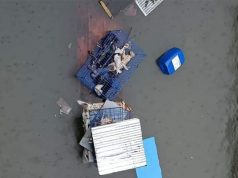A student publication posted a video of a flooded campus garden on Taft Avenue in Manila, showing koi fish that had escaped from their pond due to Super Typhoon Carina and monsoon rains.
On Wednesday, The LaSallian reported on X (formerly Twitter) that the grounds of De La Salle University Manila were flooded due to the heavy downpour.
Shortly after, a video taken by Br. Richie Yap showed at least three koi swimming around outside their sanctuary.
UPDATE: Koi fish from the Marian pond are seen swimming about in the floodwaters around the M Lhuillier Botanical Gardens.
Video Credits: Br. Richie Yap FSC https://t.co/tFbaV8hAA9 pic.twitter.com/0aYb3ubxSw
— The LaSallian (@TheLaSallian) July 24, 2024
The koi escape gained the attention of many users on X.
“It’s so baha in DLSU, the koi fish are now swimming around. THATS SUPPOSED TO BE A GARDEN,” one X user wrote with a crying emoji.
“MORE SPACE FOR THEM TO ROAM AROUND. #FreeTheKoi EME,” an online user quipped.
“May koi fish sa DLSU? Ang sosyal,” another one commented.
Some people likened the situation to heavy floods that occurred in 2012 at the University of Santo Tomas, which allowed a catfish to escape from its pond.
dlsu: koi⚜️ ust: hito👾 pic.twitter.com/Aa1CWCXsrG
— gelulululu (@gelo_reix) July 24, 2024
While some found the roaming fish humorous, one user expressed concern for the fish’s safety.
“Genuinely concerned cause last time this happened, all the fish died when the flood receded. I really think DLSU should take preventive measures such as transferring them to a safer spot when a storm is about to hit,” another one commented.
Can floods kill fish?
According to research from the University of Southern Denmark, heavy rainfall can contribute to fish mortality.
The study conducted showed that rainwater, which may run through ditches and drainage pipes, can end up in fish environments such as lakes.
“On its way, it picks up a lot of labile organic matter from the soil; leaves, mud, and partially degraded organic matter. When all this organic matter is flushed out into the lake, it becomes a target of hungry bacteria. When the bacteria consume the organic matter, they use oxygen and they take that oxygen from the water,” it read.
This process can cause oxygen depletion, which is vital for fish survival.
The LaSallian has yet to confirm whether or not the koi have survived the flood.










